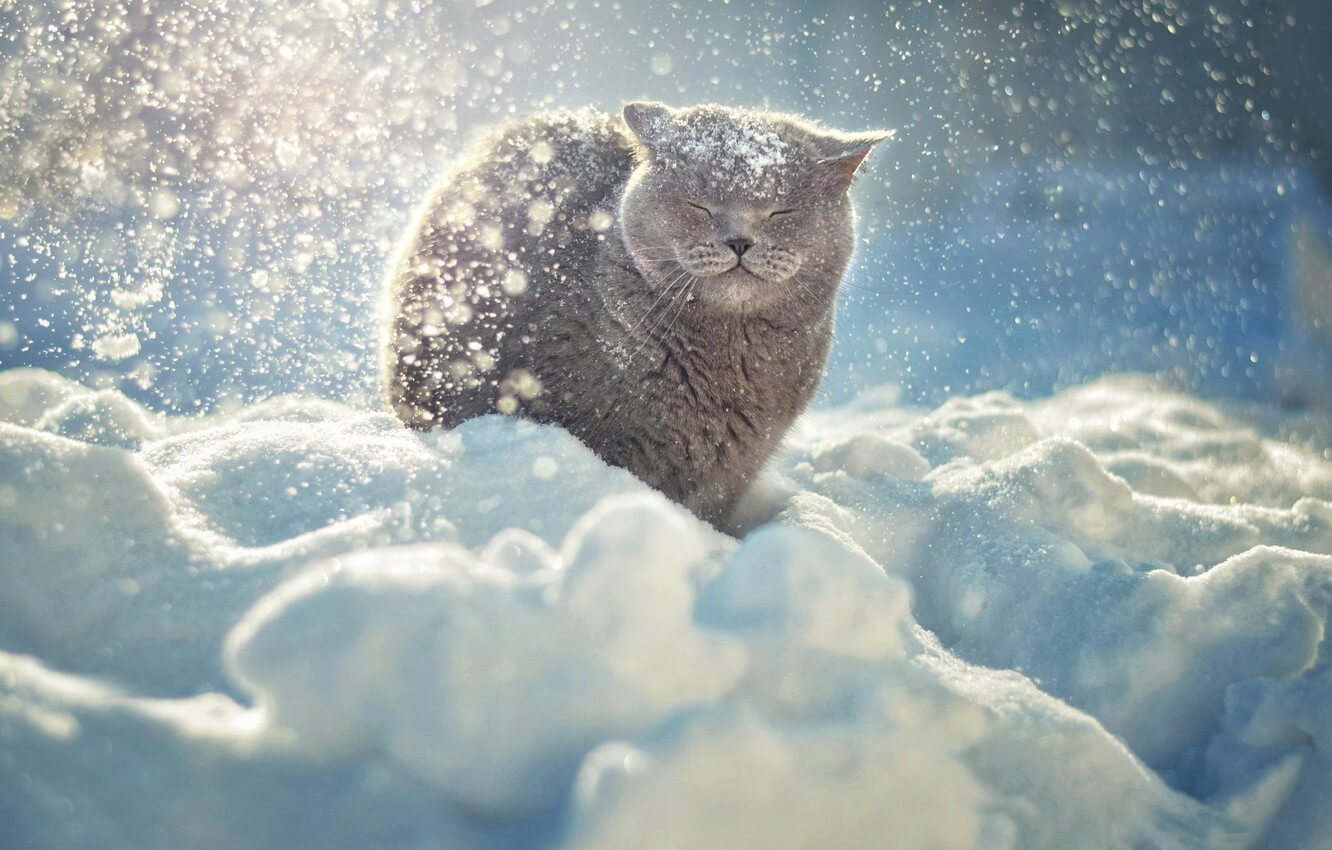Cats in winter? We have something against that – our tips for cats in winter! Cats do not curl up for hibernation. Nevertheless, the cold season brings with it some changes that affect the everyday life of our furry friends. Outdoor dogs are the most affected. But also indoor cat owners can benefit from one or the other piece of advice.
Pay Attention to Grooming in Winter

Whether outdoors or house cats: In autumn cats go through a coat change. You lose the lighter summer coat. A thicker winter coat grows back. Cats that only live in the apartment also have more abundant fur in winter. The change is more pronounced with outdoor walkers. In order to support the change of coat, you should comb or brush your velvet paw more often during the transition period. This is a must for long-haired cats, otherwise, matting will occur. Short-haired cats also benefit because they swallow less hair after brushing. Last but not least, you will find fewer tufts of fur in your four walls.
Who Better to Get “Room Arrest”?
Young cats, seniors, or sick cats are better off staying indoors when the temperature is below zero. Because they can quickly become hypothermic and sick. If they are passionate about the outdoors, give them short explorations and stay close by. After a few minutes, we go back into the house together. All cats who do not have access to a cat flap should spend freezing cold nights in a warm house.
More Flexible Thanks to the Cat Flap
Speaking of the cat flap: For some outdoor enthusiasts, five minutes of fresh air is enough in winter – they are already standing in front of the door, mewing and wanting to go back into the warmth. After three minutes it is too boring inside – the cat meows loudly and demands to go out. Outdoor owners can sing a song about it, especially in the cold season. At low temperatures, cats shouldn’t have to wait long to be admitted. A cat flap is therefore the ideal solution for free access to warm places.
Warm Place in the Cat House
Anyone who looks after feral cats or does not have a cat flap and is on the move a lot provides their cat with a warm cat house. You can equip it inside with styrofoam or electric blankets. Make sure that the subsurface is raised so that there is no waterlogging. The velvet paw has a dry and cozy retreat in the house.
Feeding Outside: Be Careful!
Some cats are permanently outside – for example, semi-wild animals on feeding grounds. In this case, pay particular attention to the mentioned retreat in the form of a warm hut. Ideal if this offers space for feeding. If possible, feed in a warm place. If you have to feed outdoors, use ceramic bowls instead of stainless steel bowls that retain the cold. Heating pads under the bowls protect them from freezing for a while. Remember to provide warm water on a regular basis.
Take Winter Activities Seriously for Cats
Much like humans, many cats have a tendency to exercise less in winter. This applies to both indoor and outdoor cats. Because the shorter days invite you to take a nap on the sofa. Playing not only helps against too many pounds but also against the winter blues of boredom. Intelligence toys, sniffing carpets, or joint clicker training are exciting alternatives to the classic games with feather duster or ball.
Watch the Cat’s Weight
Less exercise and one or two more bites a day out of boredom – winter put more pounds on the ribs of some velvet paws. Bend forward and rock your animal companion in the fall. In particular, indoor cats or animals with little urge to move should not gain weight. Check the cat’s weight every two weeks so that you can take countermeasures in good time. If the scales show a plus for house cats, reduce the ratio size and encourage the cat to play and have fun. Outdoor walkers are allowed to put on something in winter because the bacon protects against the cold. However, the weight gain should be kept within limits – from half a kilogram the velvet paw has put on too much.
Cat-friendly Facility
For indoor cats (hopefully) of course, there are numerous play and sleeping areas in their realm. Of course, a scratching post is part of it. Many outdoor enthusiasts are reluctant to be outside in winter and also benefit from animal-like interior furnishings for velvet paws. The quiet place is also part of the facility. Outdoor users who are allowed inside should have access to a litter box, and not just in winter. If outdoor enthusiasts are almost exclusively indoors in winter, set up an additional litter box if necessary.
A Cozy Place With a View of the Outdoors
It’s bitterly cold outside – but your cat still wants to know what’s going on outside. Allow your velvet paw to look out from a cozy spot. Window sill loungers are ideal for this. A good cat cinema has a bird feeding station near the window. Not always the best view, but a lot of comforts are offered by heated loungers.
Paw Care in Winter
Salt and cold put a strain on your paws. You should therefore regularly check your outdoor dog’s paws for injuries. As a preventive measure – for example, if your cat comes into contact with a lot of road salt – you can apply a paw protection ointment.

